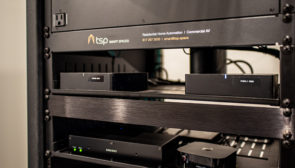Why your consumer-grade network won’t cut it for a smart home
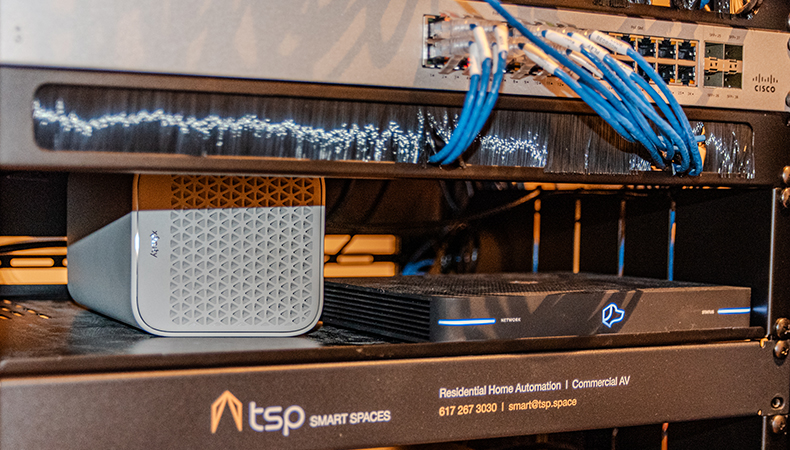
Your home network is perhaps the most important part of your smart home. While a basic consumer-grade network might suffice for casual browsing, streaming, and maybe a few smart lights you picked up at the store, it falls short when it comes to managing a fully integrated smart home. Here’s why upgrading your network infrastructure is essential for a smooth smart home experience.
1. Bandwidth limitations
Consumer-grade routers are typically designed to handle a limited number of devices. In a standard home, this might be a few smartphones, a laptop or two, a gaming device, and a few TVs streaming Netflix. In a smart home, you have hundreds of connected devices – smart TVs, thermostats, lighting, motorized shades, security cameras, voice assistants, and more. Each of these devices requires bandwidth, and a standard router will struggle to efficiently manage and prioritize this traffic. By investing in a more capable networking solution (we prefer Meraki), you can ensure that your smart home devices have the bandwidth they need to function optimally, providing a seamless and responsive smart home experience.
Upload bandwidth
Many consumer-grade internet plans offer asymmetrical connections, with much lower upload speeds compared to download speeds. Smart home devices, especially security cameras and video doorbells, rely heavily on upload bandwidth to send data to the cloud. A limited upload capacity can result in laggy video feeds or delayed notifications.
2. Range and coverage issues
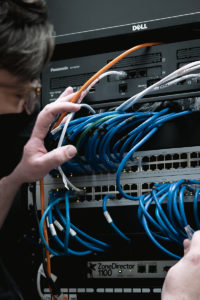
Many smart home devices, like outdoor security cameras or garage door openers, may be located far from your main router. Consumer-grade networks often have limited range and struggle to provide consistent coverage throughout a larger home or property. This can result in connection drops and unreliable performance for devices in hard-to-reach areas. Some of the major coverage challenges you’ll encounter on a consumer-grade network include:
- Signal attenuation: Wi-Fi signals weaken as they travel through space and obstacles. In a larger home, or one with complex architecture, the signal from a single router can degrade significantly before reaching distant devices. The is especially problematic for smart home devices that require consistent connectivity such as security cameras.
- Interference from other devices: The 2.4 GHz band, which many smart home devices use, is particularly crowded. It’s not only used by Wi-Fi but also by Bluetooth devices, Microwave ovens, and baby monitors. This crowding can lead to signal interference, especially in dense cities where neighboring networks compete for the same airspace.
- Limited access points: Most consumer-grade networks rely on a single router as the sole access point. This creates several issues including uneven coverage, bottlenecks that cause network congestion, and lack of seamless roaming for your portable devices.
Upgrading to a more professional network allows you to sidestep all of these issues and enables you to install multiple access points and strategically place your network devices for better coverage and consistency.
3. Security concerns
With the increasing number of connected devices, your home network becomes more vulnerable to security threats. Consumer-grade routers often lack advanced security features like regular firmware updates, robust firewalls, and the ability to create separate networks for IoT devices. This can leave your smart home ecosystem exposed to potential cybersecurity breaches.
Lack of firmware updates
Consumer routers often receive infrequent firmware updates, if any at all. This can let cybercriminals exploit known security flaws and outdated encryption standards, leaving your network more susceptible to attacks.
Limited firewall capabilities
Consumer-grade networks often include basic firewalls, but they lack some of the more advanced features such as advanced packet inspection (the ability to examine both incoming and outgoing traffic), IDS/IPS features (systems that can identify and block suspicious activities in real-time) and application-layer filtering (the ability to control network access to specific applications or devices).
Lack of network segmentation
The ability to segment your network into separate VLANs is crucial for smart home security. With network segmentation, you can isolate your smart home devices, which are often less secure than your phone and computers, onto their own network to contain breaches if they happen.
4. Lack of advanced management features
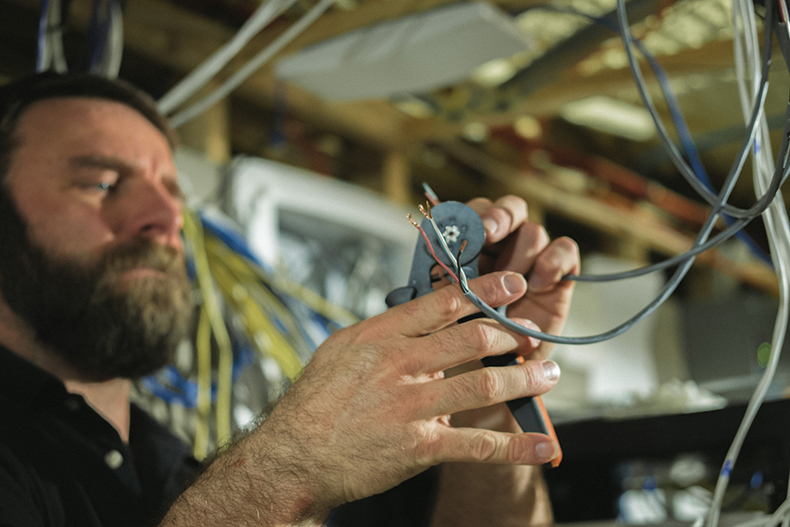
Professional-grade networking equipment offers advanced management features like detailed device monitoring, traffic analysis, and remote management. These tools can be crucial for troubleshooting issues in a complex smart home setup – something that basic consumer routers typically don’t provide.
Comprehensive device management
Consumer routers typically only offer basic device lists. This is fine when you only have a few devices. But in a smart home, you need a professional solution that allows you to see more details about each device and their bandwidth usage, and allocate specific amounts of bandwidth to each device.
Quality of Service controls
Consumer-grade routers often have limited QoS options such as the ability to prioritize certain types of traffic (video streaming) or reserve bandwidth for critical devices and services. Using consumer-grade options, this can range from frustrating when trying to stream content, to dangerous when there isn’t enough bandwidth to properly alert homeowners to break-ins or other alerts in their homes.
Remote management
This last one is huge for smart homes. At some point, your devices will either go offline or need to be updated. And you don’t want to have your daily life interrupted by having to call your smart home service provider every time there’s an issue. With professional grade networking, a competent smart home integrator go remotely access your home and perform any troubleshooting or device updates needed, without the need for them to come onsite and disrupt your personal life.
Bringing in a professional integrator with networking experience
Given the complexity of setting up a professional-grade network for your smart home, it’s always beneficial to work with a trusted smart home integrator who has extensive networking experience. Not only are professional grade network more complicated to install, you want to ensure everything is set up correctly and you’re taking full advantage of your upgraded network.
1. Expertise and experience
Smart home integrators specialize in creating cohesive, efficient, and secure smart home ecosystems. They bring:
- In-depth knowledge of various smart home technologies and their networking requirements
- Experience in designing and implementing complex network infrastructures
- Familiarity with the latest trends and best practices in smart home networking
2. Customized Solutions
A professional integrator can:
- Assess your specific needs and design a network tailored to your smart home setup
- Recommend the most suitable hardware and software solutions for your requirements
- Create a scalable network design that can grow with your smart home
3. Proper Installation and Configuration
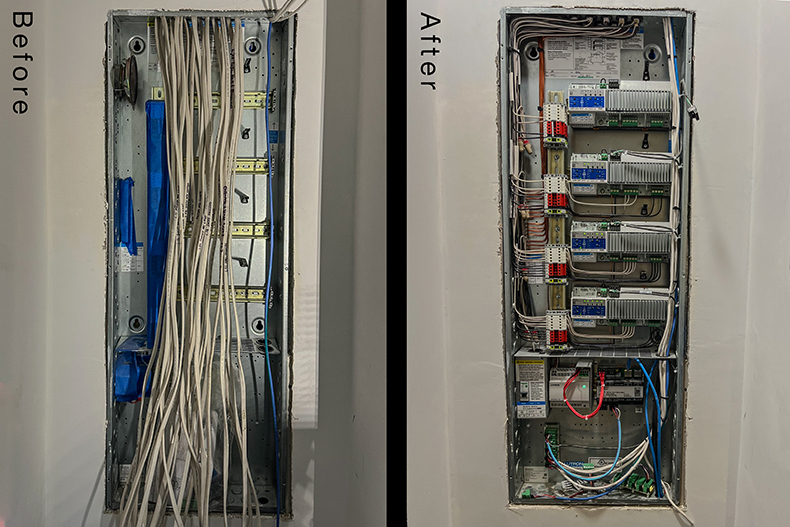
A professional integrator will install your network correctly so it’s easy to expand or troubleshoot when needed.
Integrators ensure that your network is set up correctly from the start:
- Professional installation of all networking equipment
- Optimal placement of access points for maximum coverage
- Proper configuration of advanced features like VLANs, QoS, and security settings
4. Comprehensive Planning
A good integrator will:
- Conduct a thorough network survey to understand your home’s layout and potential signal obstacles
- Plan for future expansion of your smart home ecosystem
- Consider factors like power management and cable routing for a clean, efficient setup
5. Ongoing Support and Maintenance
A good integrator will offer continued smart home support services that includes:
- Regular check-ups and system updates
- Troubleshooting and problem resolution
- Advice on expanding or upgrading your system
6. Time and Stress Savings
By hiring a professional, you save:
- Time spent researching, purchasing, and setting up complex equipment
- Stress from troubleshooting issues or dealing with incompatible devices
7. Access to Professional-Grade Equipment
Integrators often have access to:
- Enterprise-grade networking equipment not typically available to consumers
- The latest smart home technologies and integration platforms
By working with a trusted smart home integrator with networking expertise, you can ensure that your smart home is built on a solid foundation and gets the smart home . A professional-grade network, properly installed and configured, will provide the performance, reliability, and security necessary to fully enjoy the benefits of your smart home ecosystem. While it may require a larger initial investment, the long-term benefits in terms of functionality, security, and peace of mind are well worth it for many homeowners.
Ready to upgrade the network in your home? At TSP Smart Spaces, networking isn’t just an area of expertise for us, it’s in our DNA. We opened over 30 years ago as an IT service provider and while we’ve gone through a few iterations of our business operations over the years, our commitment to technology and staying on top of cyber trends has remained constant. If you’re ready to step up the network in your home, we’d love to chat!


